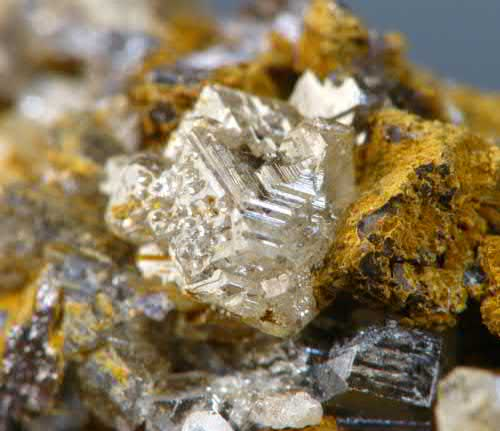Kupferiodid Chemische Eigenschaften,Einsatz,Produktion Methoden
R-S?tze Betriebsanweisung:
R22:Gesundheitssch?dlich beim Verschlucken.
R36/37/38:Reizt die Augen, die Atmungsorgane und die Haut.
R50/53:Sehr giftig für Wasserorganismen, kann in Gew?ssern l?ngerfristig sch?dliche Wirkungen haben.
S-S?tze Betriebsanweisung:
S22:Staub nicht einatmen.
S24/25:Berührung mit den Augen und der Haut vermeiden.
S26:Bei Berührung mit den Augen sofort gründlich mit Wasser abspülen und Arzt konsultieren.
S61:Freisetzung in die Umwelt vermeiden. Besondere Anweisungen einholen/Sicherheitsdatenblatt zu Rate ziehen.
Chemische Eigenschaften
Cuprous Iodide, Cu2O, cubic white crystals, practically insoluble in H2O or alcohol, soluble in NH4OH, potassium iodide, or potassium cyanide. Used in Sandmeyer’s reaction to synthesize aryl chlorides.
Verwenden
Cuprous iodide is used in the preparation of alkynyl imines, which are crucial intermediates for the synthesis of pyrroles and pyrrole heterocycles. It plays a role in the synthesis of BTBT derivatives, specifically benzothieno[3,2-b]benzothiophene, which are semiconductors used in transistors. Beyond its synthetic utility, copper (I) iodide serves as a catalyst for N-arylation of amines and amino acids, facilitating organic reactions. It also has practical applications as an ice-nucleating chemical, a coating in cathode-ray tubes, and as a source of iodine in animal feeds.
Allgemeine Beschreibung
Odorless tan or off-white solid. Sinks in water.

Marshite, CuI, octahedral crystals to 4 mm
Reaktivit?t anzeigen
Cuprous iodide has weak oxidizing or reducing powers. Redox reactions can however still occur. The majority of compounds in this class are slightly soluble or insoluble in water. If soluble in water, then the solutions are usually neither strongly acidic nor strongly basic. These compounds are not water-reactive.
Hazard
Toxic.
Health Hazard
Inhalation causes irritation of nose and throat. Ingestion of copper salts produces violent vomiting and purging, intense pain, collapse, coma, convulsions, and paralysis. Contact with eyes or skin causes irritation.
Brandgefahr
Special Hazards of Combustion Products: Irritating hydrogen iodide or iodine vapors may form in fire.
l?uterung methode
Cuprous iodide can be freshly prepared by dissolving an appropriate quantity of CuI in boiling saturated aqueous NaI over 30minutes. Pure CuI is obtained by cooling and diluting the solution with water, followed by filtering and washing sequentially with H2O, EtOH, EtOAc, Et2O and pentane, then drying in vacuo for 24hours [Dieter, J Am Chem Soc 107 4679 1985]. Alternatively wash it with H2O, then EtOH and finally with Et2O containing a little iodine. Traces of H2O are best removed first by heating at 110o and then at 400o. Exess of I2 is removed completely at 400o. It dissolves in Et2O if an amine is present to form the amine complex. On heating it becomes red, then black, but changes to white on cooling. It is sparingly soluble in H2O or alkali iodide solutions but readily soluble in NH3 (which absorbs CO) and in cyanide or thiosulfate solutions. [Glemser & Sauer in Handbook of Preparative Inorganic Chemistry (Ed Brauer) Academic Press Vol II p 1007 1965, Bawn & Ledwith Chem Ind (London) 1180 1957.]
Kupferiodid Upstream-Materialien And Downstream Produkte
Upstream-Materialien
Downstream Produkte

